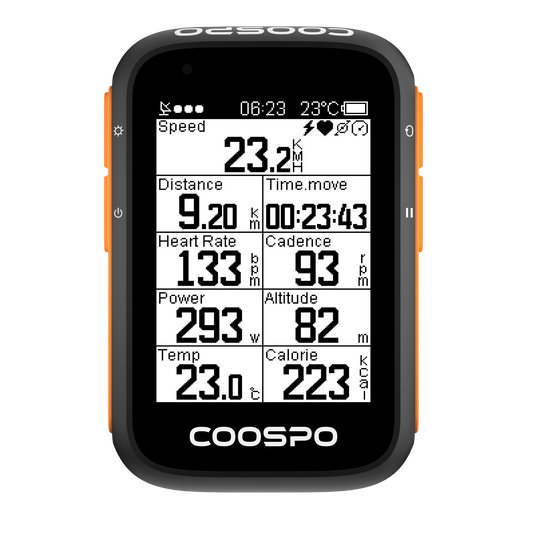Getting Back Into Running: A Complete Guide to Restart After a Break
Getting back into running after a long break can be both exciting and a bit scary. The hardest part is often just starting, whether you’re recovering from an injury or just finding the time to run again. It's easy to want to dive in and do a lot right away, but it's important to take things slow and let your body adjust to running again.
Getting back into running can be challenging and confusing since there's no single right way to do it. However, it doesn't have to be complicated.
Below is a practical, science-informed roadmap to rebuild fitness while reducing injury risk.
1. Understand Your Level of Fitness Has Changed
When you stop running, a few changes occur in your body: your blood volume decreases, the number of mitochondria (which are like power sources in your cells) drops, and your lactate threshold goes down.
The longer you've been training, the easier it is to start running again after a break. For example, if someone has been running regularly for 15 years and then takes a year off, they will find it easier to get back into running than someone who has only been running for one year and then takes a year off.
Generally, here's how much of your maximum aerobic capacity (also known as VO2 max) or cardiorespiratory fitness you might lose after taking a break:
2 weeks off: lose 5-7 percent of VO2max
2 months off: lose 20 percent of VO2max
3 months off: lose 25-30 percent of VO2max
When you take a break from running, your muscles, tendons, ligaments, and other connective tissues can lose strength and power. It's hard to say exactly how much conditioning you lose or how fast it happens. Many people get hurt when they start running again because their musculoskeletal system is weaker. That’s why it’s important to run slowly, gradually increase your mileage, and take rest days when you’re getting back into it.
The main point about starting to run again is to avoid trying to go back to your old pace right away. You need to start slowly.
2. Begin With Walking
If you haven't been active for a while, start with walking. Aim for brisk walks of 20 to 40 minutes a few times a week. This helps your muscles, tendons, and other tissues get ready for the harder work of running later on.

To get your body ready for running, start with short and easy runs, and include walk breaks. Aim for three to four short runs each week, taking a rest day in between. Begin with five to ten minutes of running, or mix running with walking.
Once you can walk briskly for 30 minutes without much soreness on most days, start adding short, easy running segments.
3. Be Patient
After an injury, many runners push themselves too hard and too fast because of a race or a goal. Even if you’ve been cycling, swimming, or doing other exercises to stay fit, remember that it can take weeks or even months for your muscles, tendons, bones, and ligaments to get strong enough for running again. Your legs take much longer than your lungs to adjust to new challenges.
Give your body time to get used to the stress of working out before you add more challenges! Here’s a simple guide to help you get back into running:
If you’ve taken a break of 1 week or less: Keep following your last plan.
If you’ve taken a break of up to 10 days: Run at 70% of how much you were running before.
If you’ve taken a break of 15 to 30 days: Run at 60% of your previous mileage.
If you’ve taken a break of 30 days to 3 months: Run at 50% of your previous mileage.
If you’ve taken a break for 3 months or more: Start from the beginning.
It's a good idea to follow the 10 percent rule when increasing your weekly running mileage. If you haven't run for three months or more, you should avoid increasing your mileage or speed by more than 10 percent each week.
4. Strength Train
Strength training can help you handle more running if done correctly. The aim isn’t just to lift heavy weights, but to improve your ability to endure fatigue. It's actually a good idea to focus on building strength before you increase your running distance.
How to structure strength work
Warm-up: 5–10 minutes easy cardio + dynamic mobility.
Main set (30–40 minutes total): squats or goblet squats, Romanian deadlifts or single-leg deadlifts, hip thrusts or glute bridges, split squats/lunges, single-leg balance/step-downs, plank variations.
.webp)
After doing exercises while sitting or lying down, add drills that copy the movements of running. This will help improve your muscle coordination, timing, and running technique, reducing the risk of injuries so you can stay active.
5. Switch Up Your Location
Instead of just getting back on the road right away, consider going to the track first.
The track is a safe, flat area where you can walk or run close to your car. This way, if you need to stop, you won’t be too far away. It's a quiet place without traffic, perfect for exercising.

Using the treadmill can be a great way to start. The surface is soft, and you can easily adjust the speed and incline to match your comfort level. This way, you can keep a steady pace for your run or run/walk.
6. Don’t Overmedicate
Over-the-counter painkillers can help you feel better for a little while, but they can hide pain that signals you should stop what you're doing. This makes them less useful in the long run. In fact, studies show that painkillers can sometimes cause more problems than they solve, like stomach issues, and they might even reduce the benefits of exercising hard.
The main rule: If you can’t run because it hurts, then don’t run. Walk or rest instead.
7. Cross Train
Exercising every day can improve your heart health. However, you don't need to run, and you shouldn't start running every day right away.
Try adding two to three days of cross-training to your routine as you increase your running distance. This will work your muscles in different ways and help you become a more balanced athlete.
Check with your doctor to ensure that your preferred workout—whether it's cycling, rowing, swimming, or using an elliptical—won't make any injuries worse, especially if that's what kept you from exercising. Otherwise, pick the activity you enjoy the most. Activities like yoga, Pilates, weight lifting, and core exercises can also help you build strength.
To make your workouts safer and more effective, consider using a heart rate monitor, such as the Coospo HW9 armband. Monitoring your heart rate helps ensure you’re training in the right zone—pushing hard enough to build endurance without overtraining.

If you haven't exercised for three months, wait two to three months before trying cross-training. Instead, take rest days between your runs. This will help your body recover and improve your aerobic fitness.











